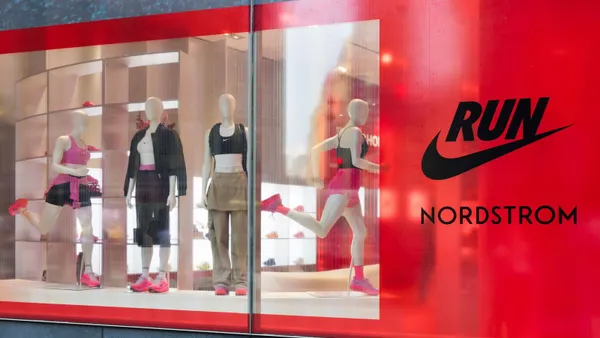Dive Brief:
- Online luxury specialist MyTheresa has raised $407 million in an initial public offering and started trading publicly on the New York Stock Exchange after earlier filing confidentially for an initial public offering in November.
- MyTheresa's parent company and its sole shareholder, MYT Holding, together offered more than 15.6 million shares priced at $26, according to an emailed press release. MYT Holding retains majority ownership in MyTheresa, with more than 75% of its shares, making MyTheresa a "controlled company" in SEC parlance.
- The IPO follows a series of bitter legal disputes over the online luxury retailer previously owned by Neiman Marcus, which filed for and exited from bankruptcy last year.
Dive Insight:
For years following its acquisition by Neiman Marcus, MyTheresa was a singular bright spot for the struggling, indebted department store. Its revenue ballooned while Neiman Marcus limped along. It was a "crown jewel," so-called by those who sued Neiman Marcus and its private equity owners when they shunted MyTheresa outside Neiman's direct ownership and out of reach of lenders.
The bitter conflict over MyTheresa played out over more than two years. It ensued precisely because the e-commerce specialist, which sells brands online such as Gucci, Prada and Saint Laurent, was so successful. Its revenue and equity value more than doubled since Neiman acquired it.
Dan Kamensky and his hedge fund, Marble Ridge, led the fight against Neiman Marcus and its owners following MyTheresa's move within the organizational structure.
Endless litigation followed the war of words, which continued into Neiman's bankruptcy. Kamensky was vindicated last summer when a Neiman board director acknowledged that creditors likely had a viable legal claim against the company for the MyTheresa move. An independent consultant backed up that allegation with an assessment that Neiman was likely insolvent when it transferred MyTheresa out from under its organizational flow chart.
The story didn't end there, though. Neiman Marcus and creditors forged a settlement that included stock in MyTheresa for unsecured creditors. Prosecutors later accused Kamensky of offering cash for those shares from creditors who wanted them and then trying to muscle out a higher offer from investment bank Jefferies, all while he served on a committee tasked with fighting for the interests of all unsecured creditors in Neiman's bankruptcy. In September, Kamensky was arrested on charges of fraud, extortion and obstruction of justice for allegedly trying to block out Jefferies and then cover it up.
The dust-up didn't derail Neiman's restructuring. The retailer exited bankruptcy later in September under new ownership and executive statements about growth ahead. In its IPO prospectus, MyTheresa lists among the risks to its business "any negative publicity or negative market perception" around its previous ties to Neiman Marcus.
For now, the luxury seller is growing and appears strong as its profits tick up even in a difficult operating environment. MyTheresa's sales and operating income have continued growing over the past three years, including during the pandemic that overtook the retail industry last year, according to securities filings. At 449.5 million euros (or about $546 million), MyThersa's net sales were up 18.6% year over year in 2020.
"We are in a position of strength, underscored by our differentiated value proposition for brands and customers and our profitable growth that has proven to be enduring and scalable," MyTheresa CEO Michael Kliger said in the press release announcing the retailer's launch as a publicly traded company. "The future for Mytheresa is bright, as affluent consumers worldwide rapidly adopt online shopping for luxury fashion."














